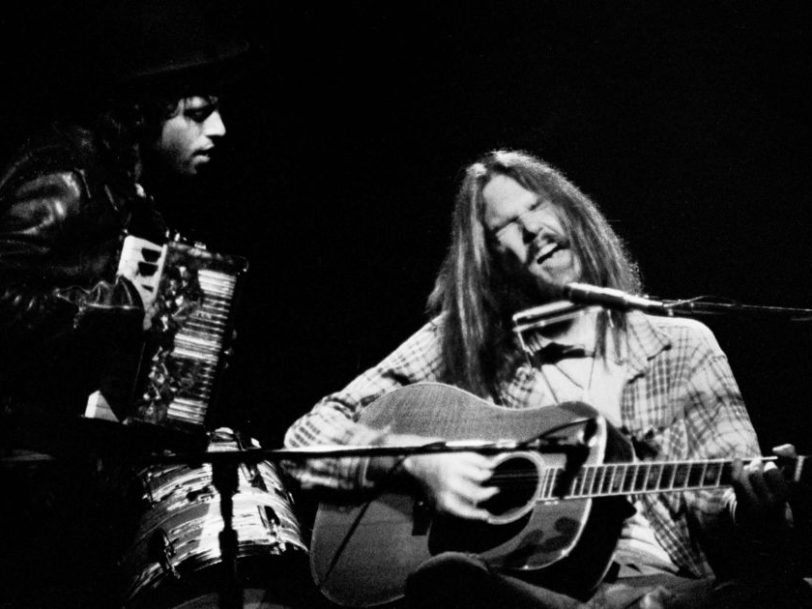Nils Lofgren was just 18 when he booked his first Neil Young sessions, playing piano and guitar on the Canadian icon’s career-making After The Gold Rush album. Three years later, the multi-instrumentalist prodigy had led his own band, Grin, to success and been enlisted into Young’s on-off backing band Crazy Horse, playing alongside guitarist Danny Whitten on the group’s sole, self-titled album. But when Whitten died of a drug overdose in November 1972, followed just six months later by Bruce Berry, a beloved roadie for Crosby, Stills, Nash & Young, Lofgren, Young and the entire Crazy Horse stable were plunged into a deep grief that flooded Young’s Tonight’s The Night album and which remained all too palpable throughout the tour that followed. One notorious performance, recorded on 5 November 1973, at London’s Rainbow Theatre, and released, half a decade later, as the live album Somewhere Under The Rainbow, the sixth entry in Neil Young’s Official Bootleg Series, reveals a group of colleagues and friends seeking a collective catharsis on stage while also reaching creative heights that remain unparalleled in Neil Young’s storied career.
“That was such a powerful, visceral chapter for me,” Lofgren tells Dig! of the Tonight’s The Night era. “I think the music and the madness of that tour healed us and was a ray of light to deal with the rage and the grief and the loss we all of a sudden found ourselves in.”
Listen to ‘Somewhere Under The Rainbow’ here.
The personal losses Young and Crazy Horse suffered were the latest in a spate of deaths that seemed to mark the end of 60s idealism, as fatal overdoses began claiming the lives of some of the era’s most visionary talents. “It was a very difficult time, when the hippie-dippie 60s, free-love-and-music 24-seven, turned dark,” Lofgren reflects. “Danny Whitten and Bruce Berry, Brian Jones, [Jimi] Hendrix, Janis Joplin – all of a sudden our friends and heroes started dying. And I found myself making what I call a ‘wake’ album, where we just kind of commiserated and helped each other to deal with this sudden darkness that I really didn’t have many tools to cope with.”
‘Tonight’s The Night’ sessions: “We tried to share the drama and the magic”
Entering the studio in the late summer of 1973, Neil Young addressed that harrowing time in the Tonight’s The Night album: a collection of existential songs that found Young seeking to escape the gloom (Mellow My Mind) while struggling to understand his place within it (Borrowed Tune, Albuquerque, World On A String) and attempting commune with his departed friends (Tonight’s The Night). But while the album release was delayed until June 1975, the tequila-fuelled recording sessions that spawned the record spilled onto the stage, as Young took his newly christened band, The Santa Monica Flyers – the Crazy Horse rhythm section of Billy Talbot (bass) and Ralph Molina (drums), plus Nils Lofgren and steel guitarist Ben Keith – out on tour, playing his stark new songs to baffled audiences who wouldn’t hear the material again for almost another two years.




